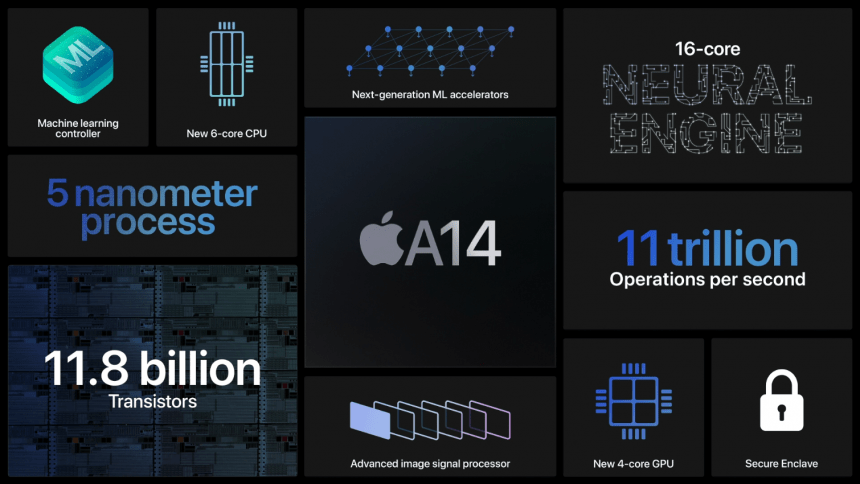Apple unveils the A14 Bionic, its first 5nm processor for the Apple Silicon era, with great new features onboard.
After almost a decade of anticipation, Apple finally announced last June that it would make the leap to its own processors. The so-called Apple Silicon would accommodate both the latest generation of mobile devices and the next generation of Macs. The Apple A14 Bionic is the first to arrive onboard the brand new iPad Air (2020) after this announcement.
In the past, Apple has topped the gross performance charts with all its iPhone and iPad processors. It is now also set the trend on the Mac. This applies all the more to this new chip, which consistently improves on what was seen in 2019 with the Apple A13 Bionic.
The Apple A14 Bionic is said to be the first of several variants that could bring the brand’s next devices to life. It is also the first in the expected 5nm manufacturing process to be produced by TSMC, the world’s leading chip manufacturer. Together with the new design, it will enable a new level of performance and energy efficiency, starting with the new iPad Air.
Apple A14 Bionic, the benefits of small size: There is room for more
The Apple A14 Bionic benefits from this architectural leap to increase the number of transistors per unit area in silicon. This will be increased to a total of 11.8 billion or up to 40% over the last generation to increase performance across the entire chip.
With six processor cores – four highly efficient, two high performance – you get up to a 40% performance increase over the previous generation iPad Air in conventional processing or CPU.
Up to 30% better graphics performance with its four cores. In the case of iPad Air, we see an improvement that makes this performance twice that of typical Apple laptops.
For artificial intelligence or AI tasks, it also doubles the number of dedicated processing units to up to 16 cores. This means it is capable of performing up to 11 TOPs, i.e. one-third of the operations per second for predictive tasks. Or the same, 2x, which is 10 times more than the previous generation iPad Air. New accelerators are planned for tasks like matrix multiplication, second generation.
For several years Apple has been introducing various processors or SoCs. In general, they are very similar in design, except that they can activate a larger number of calculation units depending on the final application they are intended for. An iPad Pro, for example, could have even more graphics performance, even at the cost of much higher power consumption.
It is expected that the Apple A14 Bionic will be the most basic bet of a possible new series that could be completed over the course of next year with variants such as the A14X – which according to industry sources would be very close to production launch – or the A14Z for the next iPad Pro or Mac, which is expected to be launched on it. So if the new SoC’s key figures are already impressive, they could be even more so when it is launched.
